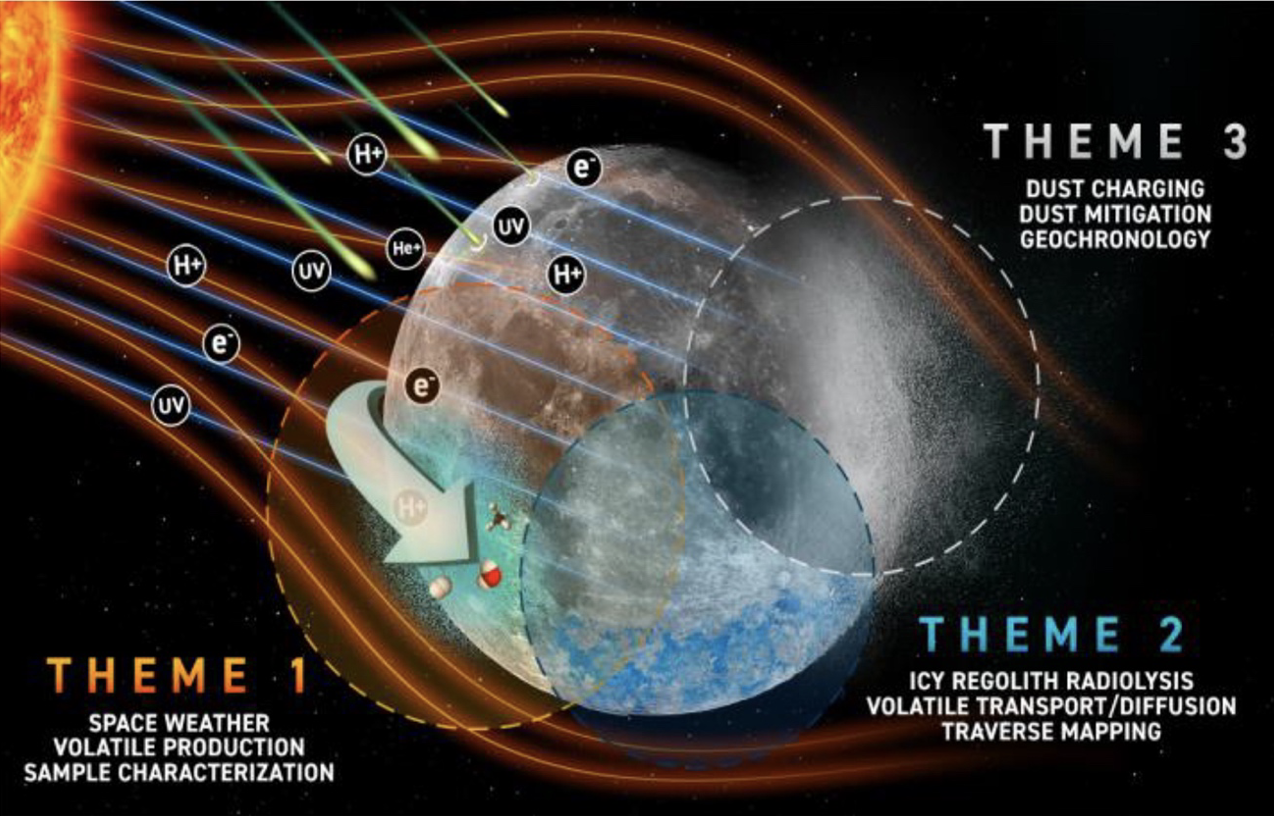
May 15, 2023 - Atlanta, GA
The National Aeronautics and Space Administration (NASA) has announced the funding of the $7.5M Center for Lunar Environment and Volatile Exploration Research (CLEVER), led by Prof. Thom Orlando of the School of Chemistry and Biochemistry. CLEVER is the successor to Prof. Orlando’s pioneering REVEALS (Radiation Effects on Volatiles and Exploration of Asteroids and Lunar Surfaces) center, both part of NASA’s Solar System Exploration Research Virtual Institute (SSERVI) program.
REVEALS and CLEVER look ahead to the return of humans to the moon for sustained periods, a key part of NASA’s plan for space exploration in the coming decade. To prepare for this, it is vital to understand the lunar environment, and the generation and properties of “volatiles” and dust. The volatiles such as water, molecular oxygen, methane, and hydrogen are key to supporting human activity on the moon. Dust is also important since the space-weathered particles can pose health effects to astronauts and hazards to the technology and hardware. The interdisciplinary group of researchers supported by CLEVER will study how the solar wind and micrometeriorites produce volatiles, how ice and dust behave in the lunar environment, develop new materials to deal with potential dust buildup, and invent new analysis tools to support the upcoming crewed missions of the Artemis program.
Says Prof. Orlando, “The resources and knowledge that CLEVER will produce are absolutely required for the sustainable presence of humans on the Moon. We have the correct mix of fundamental science and exploration – real fundamental ground-truth measurements, very good theory/modeling and engineering – an easy "mix" with Georgia Tech and outside partners.”
According to Orlando, CLEVER adopts a unique perspective on the challenges of understanding how to operate on the moon. “The atomic and molecular view of processes with angstrom distances and femtosecond time scales can help unravel what is happening on planetary spatial scales and geological time frames. We can also translate our knowledge into materials, devices and technology pretty quickly and this is necessary if we want to help the Artemis astronauts.”
The CLEVER center includes investigators from Georgia Tech, University of Georgia, the Florida Space Institute, University of Hawaii, Auburn University, Space Sciences Institute, the Johns Hopkins University Applied Physics Laboratory. Lawrence Berkeley National Laboratory, NASA Ames, NASA Kennedy Space Center, and partners in Italy and Germany. In addition to pursuing its exciting mix of fundamental science and mission support, CLEVER will also emphasize the research and career development of students and young investigators, another important goal of the SSERVI system.
NASA’s announcement of the CLEVER center, along with four other SSERVI programs, can be found at https://www.nasa.gov/feature/nasa-selects-five-teams-to-study-lunar-science-and-sample-analysis.